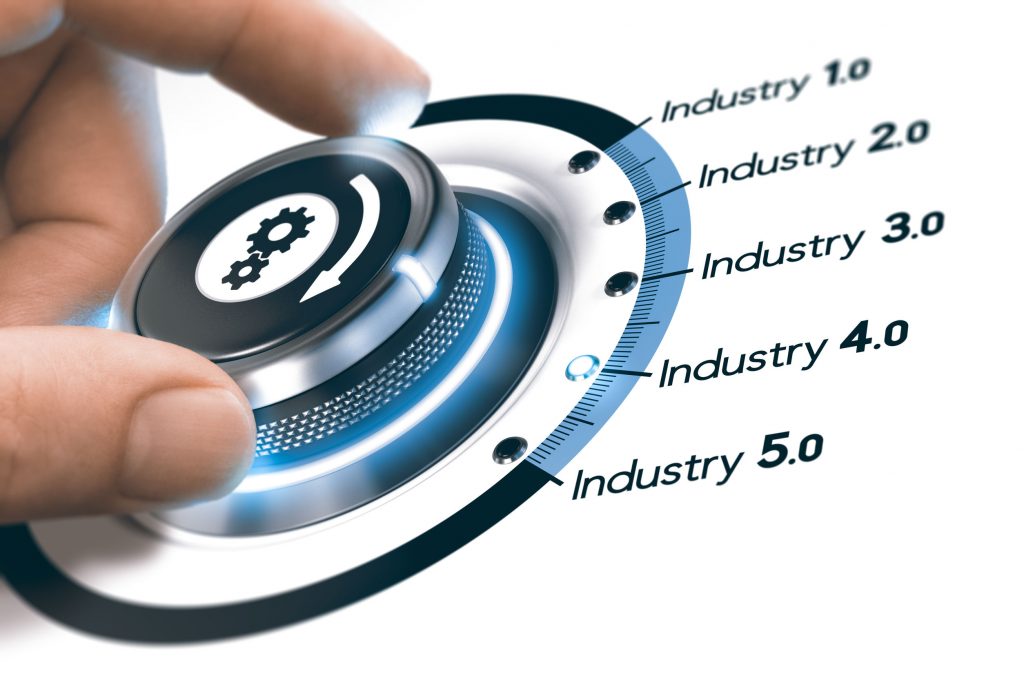The world is moving forward quickly, and we are now entering the Fifth Industrial Revolution (5IR). However, to understand 5IR better, it is important to know what an Industrial Revolution is. The term “Industrial Revolution” was first used by the 19th-century historian Arnold Toynbee to describe Britain’s economic growth from 1760 to 1840. Each industrial revolution has brought significant changes in technology and production methods, and 5IR is no different.
While at first glance, the 5IR or Industry 5.0 may seem like an extension of the Fourth Industrial Revolution (4IR), it brings a paradigm shift in how technology and humanity coexist.
Moreover, we hear about the 5IR every day. The media mentions it so frequently that we think we know what it is, but we never truly understand its impact on us. In this article, we will explain the 5IR, how it evolved from the 4IR, its main ideas, and its effects on society, jobs, and policies.
Table of Contents
- What is the Fifth Industrial Revolution?
- Evolution from the 4th Industrial Revolution to the 5th Industrial Revolution
- What is the Core of the Fifth Industrial Revolution?
- What is the Role of AI and Robotics in the 5th Industrial Revolution?
- What are Sustainable and Ethical Manufacturing Practices?
- Collaboration Between Humans and Machines in 5IR
- Companies Leading the Way in the 5th Industrial Revolution (List the company if possible)
- What are the Challenges and Opportunities in the Fifth Industrial Revolution?
- What is the Impact of the 5th Industrial Revolution on Employment and Skills?
- What are the Policies and Regulations in the Age of the 5th Industrial Revolution?
- Conclusion
- The Fifth Industrial Revolution – FAQs
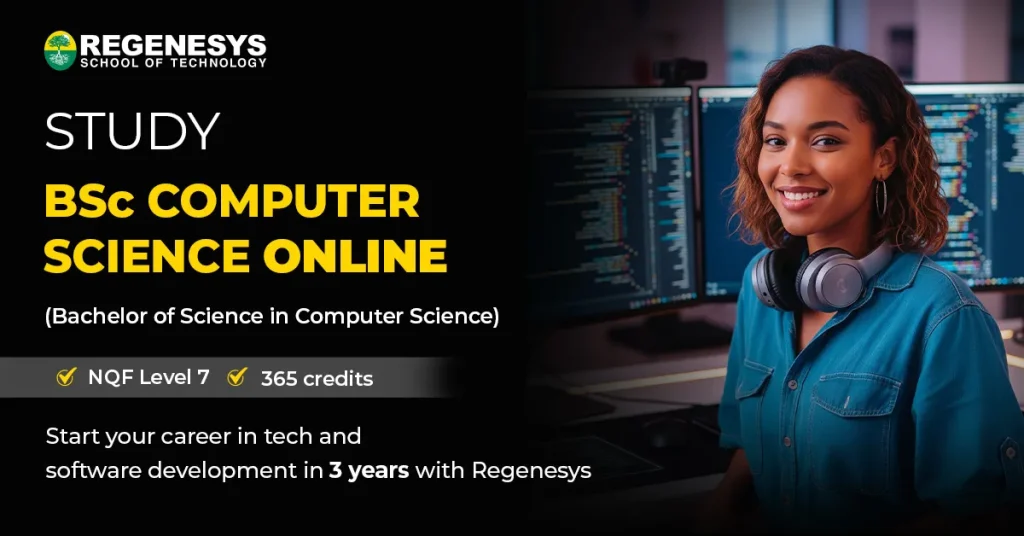
What is the Fifth Industrial Revolution?
The 5IR is all about humans and machines working together. Unlike past revolutions, where machines often took over human jobs, the 5IR highlights teamwork, ethical practices, and sustainable production.
5IR uses advanced technologies like artificial intelligence (AI), robotics, and the Internet of Things (IoT) to boost what humans can do and create a more personalised and friendly work environment. That means it will be shaped by the ongoing development of AI, especially technologies like GPT models. These models are more than just tools; they are becoming cognitive partners that will change how we live, work, and think.
Hence, the 5IR promises a future where AI is not just a helper but a key part of our thought processes, making our decisions, creativity, and interactions with the world better.
Evolution from the 4th Industrial Revolution to the 5th Industrial Revolution
As we see the Fourth Industrial Revolution (4IR) moving forward, it is clear that changes are happening very quickly. The 4IR brought us advanced technologies like AI, robotics, augmented reality, and virtual reality.
Klaus Schwab, founder of the World Economic Forum, first used the term “Fourth Industrial Revolution” at a 2016 meeting in Davos.
Now, Industry 5.0 builds on these technologies but focuses more on putting humans at the centre. It aims to solve problems from past revolutions, like environmental damage and ethical issues with technology, by including human values and well-being in tech advancements. Here, we have provided the key differences between 4IR and 5IR to give you a better understanding of the evolution:
| Aspects | Fourth Industrial Revolution | Fifth Industrial Revolution |
| Focus | Connecting machines and enhancing efficiency | Delivering customer experience and employee wellness |
| Primary Goals | Efficiency, productivity, and mass customisation | Employee wellness, prosperity beyond jobs, and resilience |
| Customisation | Mass customisation: Flexible and personalised products at low costs | Hyper-customisation: Highly personalised user experiences |
| Workforce Involvement | Workforce distanced from factories; high automation | Workforce integrated with factories; humans work alongside automation |
| Product Type | Smart products. For example, remote cameras providing security | Experience-activated (interactive) products. For example, automatic recognition of speech and gestures |
What is the Core of the Fifth Industrial Revolution?
The core of the 5th Industrial Revolution is about blending human creativity with machine efficiency. It focuses on creating a workplace where people and machines work together to achieve better results. This revolution emphasises ethical practices, sustainability, and improving human skills through advanced technologies.
Marc Benioff, the founder of Salesforce, sees it this way: “I see a crisis of trust in technology,” he told the World Economic Forum. He added, “In the Fifth Industrial Revolution, we’re going to have to have… a chief ethical and humane use officer. Are we using these technologies for the good of the world? You can’t do business in the Fourth Industrial Revolution without the trust of your employees and your customers and partners.”
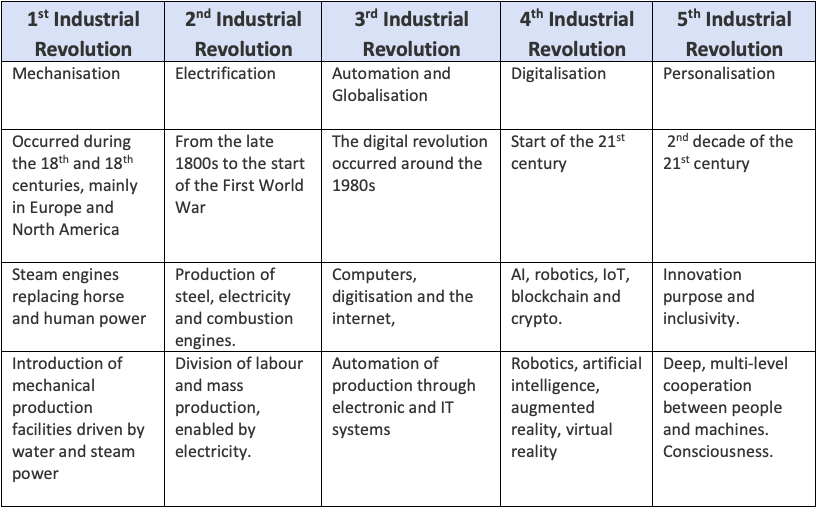

What is the Role of AI and Robotics in the 5th Industrial Revolution?
AI and robotics are very important in Industry 5.0. They help by performing routine and complex tasks automatically so humans can focus on more creative and strategic work. AI helps make better decisions by analysing lots of data, while robots make manufacturing and other industries more efficient and accurate.
This doesn’t mean people will become unnecessary. Humans will always have important roles, but things will change a lot. Just like during the First Industrial Revolution, when people had to move from farms to factories and learn to operate machines, we now need to let go of old methods, learn new skills, and take on different jobs. Today, our ability to think creatively and solve problems is more important than ever for making the economy work well.
Elon Musk, Tesla’s CEO, admitted that “excessive automation” at his company was a mistake, tweeting that “Humans are underrated.”
The teamwork between humans and robots, known as “cobots,” shows how the 5IR is all about working together. In other words, in the 5th Industrial Revolution, we will have much better teamwork between people, machines, and systems to get the best results.
Industry 5.0 will make the factory a place where creative people can come and work to create a more personalised and human experience for workers and their customers,” says Esben Østergaard, Universal Robots’ chief technology officer and co-founder.
What are Sustainable and Ethical Manufacturing Practices?
The 5IR places a strong emphasis on sustainable and ethical manufacturing practices. These practices are increasingly important to consumers and businesses, bringing positive social impact. Here are some of the key practices for sustainable and ethical manufacturing:
- Using renewable energy sources like solar and wind to reduce their impact on the environment.
- Implementing efficient production methods to reduce waste and make the most of resources.
- Ensuring fair labour practices by providing good working conditions.
- Adopting green technologies to lessen their environmental impact.
- Promoting a circular economy by focusing on recycling and reusing materials to support sustainability.
Collaboration Between Humans and Machines in 5IR
In the Fifth Industrial Revolution (5IR), working with machines changed industries in many ways. Instead of replacing jobs, this teamwork enhances human skills and opens up new opportunities for innovation. By combining the precision of machines with human creativity and decisions, businesses are becoming much more efficient and productive. Here’s how this collaboration is making a difference in various industries:
- Drones analyse crop and soil conditions in agriculture, helping farmers with irrigation and fertilisation while performing planting and spraying tasks.
- In retail, AI chatbots manage routine customer inquiries, and robots assist with stocking and inventory, allowing human staff to focus on complex customer needs.
- In transportation, self-driving cars use AI for navigation, with human drivers monitoring and taking control when needed.
- In healthcare, AI machines help analyse medical images, and robots assist in surgeries. Doctors make final decisions and provide patient care.
Companies Leading the Way in the 5th Industrial Revolution (List the company if possible)
Several companies are leading the way in the Fifth Industrial Revolution (5IR). They are driving new innovations and setting new standards for how technology and people can work together. These leaders are introducing exciting new technologies and practices. Their focus is on using technology ethically, putting people first, and promoting sustainability. The following are the leading companies making significant contributions:
- Tesla
- Salesforce
- Universal Robots
- Siemens
- IBM
- Microsoft
- Amazon
The graph below depicts their view on the adoption on 5IR technologies.
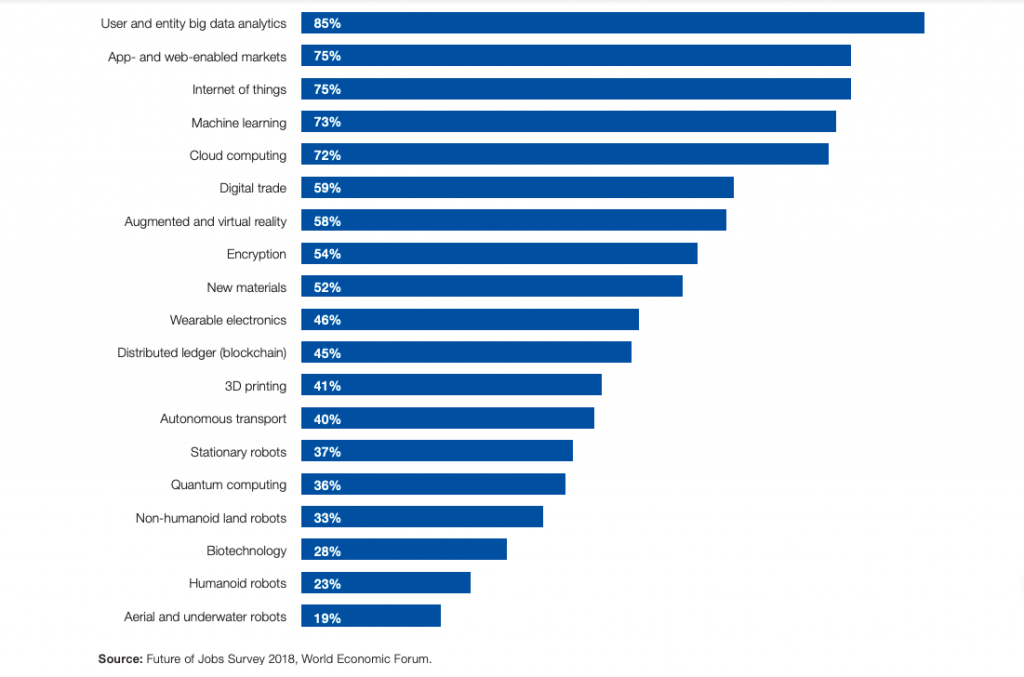
Technologies by proportion of companies likely to adopt them by 2022 [projected]

What are the Challenges and Opportunities in the Fifth Industrial Revolution?
The Fifth Industrial Revolution (5IR) comes with both challenges and opportunities, especially as we move into this new era of technology. That means, while it offers many benefits and improvements, there are also some problems that we need to solve. Here are the key challenges and potential of the 5th Industrial Revolution:
Challenges in the Fifth Industrial Revolution:
As we enter the Fifth Industrial Revolution, we face several important challenges to make sure we use its benefits wisely and fairly.
- Need for New Skills: Workers must learn new technical skills to work effectively with advanced robots and smart machines.
- Adoption of New Technology: It takes time and effort to adopt new technologies like smart software, real-time data, robots, 3D printing, AI, IoT, and Cloud computing.
- Investment Requirements: New technologies and employee training can be expensive, making it difficult for some companies to update their production lines.
Opportunities in the Fifth Industrial Revolution
Here are the key opportunities that encourage industries and companies to implement 5IR:
- Better Maintenance: Using smart sensors, IoT devices, and special software helps predict when machines might fail, allowing for timely fixes and reducing downtime.
- Sustainability: Industry 5.0 helps use resources more efficiently, reduces waste and overproduction, and supports local economies through flexible business models and local production.
- Boosted Human Efficiency & Productivity: With advanced technologies taking on repetitive and dangerous tasks, humans can focus on creative and strategic work, leading to greater productivity and job satisfaction.
- Improved Production Efficiency: Connected machines and smart software can forecast how well production will perform and adjust processes to prevent losses and improve flexibility.
What is the Impact of the 5th Industrial Revolution on Employment and Skills?
The Fifth Industrial Revolution (5IR) is changing the job market by creating new jobs and transforming existing ones. With advances in technology, new opportunities are opening up in fields like AI, robotics, data analysis, and sustainability. Let’s take a closer look at the impact of 5IR on employment and skills:
- Creation of New Roles: As AI and robotics grow, new jobs are being created, such as AI experts, robotics engineers, data analysts, and sustainability specialists.
- Increased Demand for Human Creativity: With machines handling repetitive tasks, there is a bigger need for human creativity, problem-solving, and strategic thinking.
- Continuous Upskilling Required: To stay relevant, workers will need to keep learning new skills and adapt to new technologies throughout their careers.
- Need for Advanced Technical Skills: New jobs require skills in machine learning, robotics programming, and data science, so technical training is becoming more important.
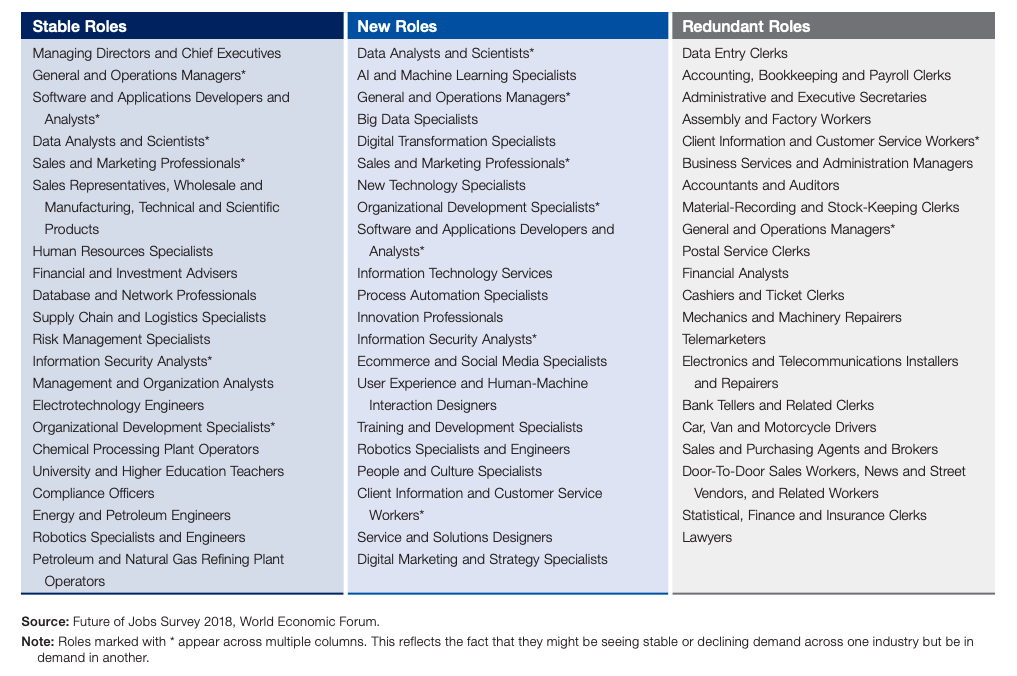
What are the Policies and Regulations in the Age of the 5th Industrial Revolution?
As the 5IR progresses, governments and regulatory bodies will play a key role in guiding its growth. This new era of technology offers exciting opportunities but also presents challenges. However, to ensure fair and responsible benefits, we need rules for data protection, ethical AI use, and fair worker treatment. These regulations will help prevent growing inequalities and ensure that technology’s advantages are distributed more evenly.
Given below are some key points that explain the need for policies and regulations at the age of 5IR:
- Privacy and Cybersecurity: Strict rules to protect data and privacy are essential in the 5IR. We need to balance new technology with keeping personal information safe.
- Workplace Transformation: Work is increasingly remote and flexible. Hence, policies should help workers learn new skills and manage remote work effectively.
- Ethical Use of Technology: It is important to use advanced technologies responsibly. Therefore, we need clear rules to ensure AI and other tech are used fairly and do not worsen existing problems.

Conclusion
The Fifth Industrial Revolution (5IR) is reshaping how technology integrates into our lives. It focuses on collaborating with machines to enhance creativity and promote sustainability. Unlike previous revolutions, 5IR seeks to make technology more personalised and ethical.
However, to fully embrace 5IR, we must address its challenges and seize its opportunities. This involves setting clear rules to protect privacy, use technology responsibly, and support worker adaptation. By managing these changes thoughtfully and fostering continuous learning and ethical practices, we can ensure that 5IR’s benefits are fairly shared and contribute to societal improvement. Hence, as we move forward, it’s crucial to balance new technology with human values. We want to create a future where technology makes our lives better without taking away from what makes us human.
The Fifth Industrial Revolution – FAQs
How does 5IR differ from the Fourth Industrial Revolution (4IR)?
While 4IR introduced advanced technologies, 5IR emphasised human-centred approaches, improved teamwork between humans and machines, and addressed past issues like environmental damage.
What are the core principles of the 5IR?
5IR blends human creativity with machine efficiency, promotes ethical practices, ensures sustainability, and enhances human skills with advanced technologies.
What role do AI and robotics play in the 5IR?
AI and robotics handle tasks and data analysis, improving efficiency and productivity and allowing humans to focus on creative and strategic work.
What opportunities does the 5IR offer?
Opportunities include improved maintenance, increased sustainability, better human efficiency, and enhanced production processes.
How are companies adapting to the 5IR?
Companies like Tesla and Salesforce are leading by integrating technology ethically, focusing on human-centred approaches, and promoting sustainability.

